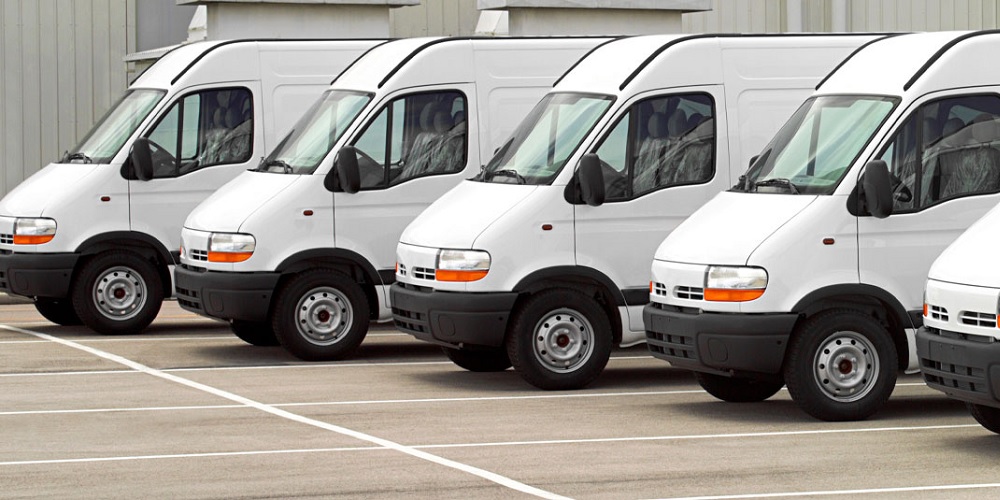How to make public fleet purchasing a faster process

Fleet purchasing has never been a particularly speedy process, but with inflated lead times and global chip shortages, expectations are beginning to shift. Historic data highlights an order-to-delivery (OTD) timeline that is constantly in flux.
As public fleet purchasing timelines continue to expand, it becomes imperative to speed up the process as much as possible. This means integrating with modern solutions that have a proven track record of expedited timelines.
Fortunately, getting started is easy to do. Let’s discuss a few of these modern strategies in detail.
Factors affecting the fleet purchasing timeline
Public fleet directors face innumerable procurement obstacles, especially if they work in smaller organizations and agencies. Experts cite major factors such as:
- Vehicle supply shortages: The fleet supply chain remains fragile and complex, creating multiple challenges for public agencies with tight deadlines.
- Growing recession prices: The United States is facing one of its biggest inflationary periods of all time, sending fleet procurement costs through the roof.
- Slow repair processes: Getting repairs for public fleet vehicles may take weeks, if not months, setting back operational timelines and overall efficiency.
- Transition to EV vehicles: As more municipalities shift to electric vehicles, new guidelines for sustainability (and new model expectations) may slow down OTD times.
- Widespread labor shortages: Many fleet procurement managers are concerned about labor shortages in neighboring markets, most of which extend purchasing timelines or complicate the bidding process.
Procurement officers in public organizations inevitably face a combination of these purchasing factors. However, there are ways to mitigate their impact or reduce their effects by a substantial degree.
Three ways to speed up the fleet purchasing process
It's impossible to completely eliminate the factors contributing to longer fleet procurement times. However, it is possible to combat inefficiencies with various vetted strategies. Public institutions should lean on the following suggestions.
1. eProcurement software
Sometimes referred to as e-fleet portals, eProcurement tools enable you to digitize the bulk of your fleet management process, including bids and procurement timelines. Integrating the right software with your workflow could help you track bid progress, vehicle lifecycles, and fleet deadlines in the same place.
The power of e-fleet portals has been continuously proven in the marketplace. Studies indicate that eProcurement tools may reduce requisition-to-order cost by 48% and lower transaction cycle time by 50%, which is a massive boon for public agencies pressed for time.
2. Standardization
In public fleet purchasing, standardization refers to the process of equalizing vehicle models, designs, and equipment. This simplifies acquisition and speeds up your OTD timeline by removing unnecessary variability from your orders.
The standardization process could be as complex or generic as you want, depending on your agency or specific application. For example, you can use standardization policies to set guidelines for chassis sizes, vehicle branding, or vehicle type (e.g., sedans). However, you could also look into guidelines for upfitting or retrofitting your vehicles, depending on the needs of your public agency.
3. Solicitations
Solicitations enable public fleet entities to request proposals for specific needs. Creating solicitations advertises your interest in competitive bids from multiple suppliers, which may drive down costs and OTD.
However, traditional solicitation processes may not be fast enough to suit your fleet procurement timeline. Instead, you can rely on digital solutions through open portals that enable your agency to get better marketplace visibility and therefore, more competitive bids.
A fourth solution: Cooperative contracts
Each of these solutions can provide utility to your public fleet purchasing process. However, the tool that brings them all together is found in cooperative contracts.
A cooperative contract is a unique purchasing agreement between multiple organizations and a single contractor. Used correctly, it can shave down unnecessary expenditures, reduce agency workload, and ultimately decrease your delivery timeline by eliminating traditional RFPs.
Here's why cooperative contracts are among the most popular solutions for modern fleet managers:
- Simple to use: Cooperative contracts don't require you to draft an RFP in house or even know how. All you need to do is search for a contract, contact the supplier, and sign the necessary documents to get started.
- Cost-effective: Cooperative contracts use economies of scale to lower costs for agencies on the same contract. This means you can access high-quality goods and low prices, including equipment that may be hard to find.
- Widely compliant: Cooperative contracts are competitively solicited on behalf of registered users. If you want to check for discrepancies just in case, you can always view legal statuses by state.
Cooperative contracts are free to browse with Sourcewell at any time.
Here at Sourcewell, we help public agency buyers procure fleet vehicles faster by fulfilling the time-consuming bid process for them. Through cooperative contracts, we expedite the fleet vehicle procurement process so you can better serve your teams.
Want a faster procurement process? Contact one of our specialists today to buy the fleet solutions you need!


